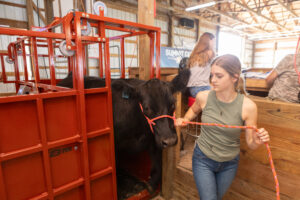Top Considerations When Purchasing an Animal Livestock Scale
In the world of agriculture and farming, ensuring the health and proper growth of your livestock is paramount. An essential tool in achieving this goal is a reliable animal livestock scale. However, selecting the right scale is not as straightforward as it may seem. There are several critical features to consider to ensure the scale serves your needs effectively. Here’s a guide to the top considerations when purchasing an animal livestock scale.
1. Serviceability and Load Cell Placement
One of the most common issues with livestock scales is weighing inaccuracies due to material buildup. To combat this, it’s crucial to consider the serviceability of the scale, particularly the placement of load cells. Load cells should be positioned in a manner that facilitates easy cleanout, preventing material buildup that can lead to weighing errors. A well-designed scale will allow for straightforward maintenance, ensuring long-term accuracy and reliability.
2. Load Cell Overload Protection
The unpredictability of animal behavior means that scales often have to withstand considerable force, especially when animals “shock” the scale by stepping on it aggressively. To protect against this, look for scales with load cell overload protection. It’s advisable to overestimate the capacity of the scale based on the size of the animals you intend to weigh. This precaution ensures the scale can absorb unexpected impacts without sustaining damage, maintaining its accuracy and longevity.
3. Portability
The need for portability depends on the specific requirements of your farm. If you need to move the scale to different parts of the farm or use it for various animals, such as cows, pigs, sheep, and goats, portability becomes a significant consideration. Opt for a scale that offers ease of movement without compromising on durability or weighing accuracy.
4. Durability
Given that livestock scales are subjected to considerable wear and tear, durability is a non-negotiable feature. The scale must be constructed from high-quality steel and engineered to withstand the harsh conditions of farm life. A durable scale ensures that your investment is protected and that the scale will continue to deliver accurate measurements over time.
5. Cleanout
The ease of cleaning is closely related to serviceability but deserves its own mention. All components of the scale that require regular service or cleaning should be easily accessible. Ideally, the scale should be designed for washdown, allowing for thorough cleaning to prevent material buildup and ensure hygiene. Additionally, components should be designed for easy replacement by field service technicians, minimizing downtime and maintenance costs.
6. Data and Connectivity
Modern farming practices increasingly rely on data to track the health and growth of livestock. When choosing a livestock scale, consider whether you need features such as electronic weight tracking or the ability to use RFID for automatic identification and weighing of animals. Integration with data collection systems can streamline your operations, making it easier to monitor your livestock’s health and make informed decisions.
Conclusion
Selecting the right animal livestock scale involves more than just considering the weight capacity. It’s about ensuring the scale can withstand the rigors of farm life while providing accurate, reliable data in a user-friendly manner. By prioritizing serviceability, overload protection, portability, durability, cleanout ease, and connectivity, you can choose a scale that not only meets your immediate needs but also serves your farm well into the future. Remember, investing in the right scale is investing in the health and productivity of your livestock.





